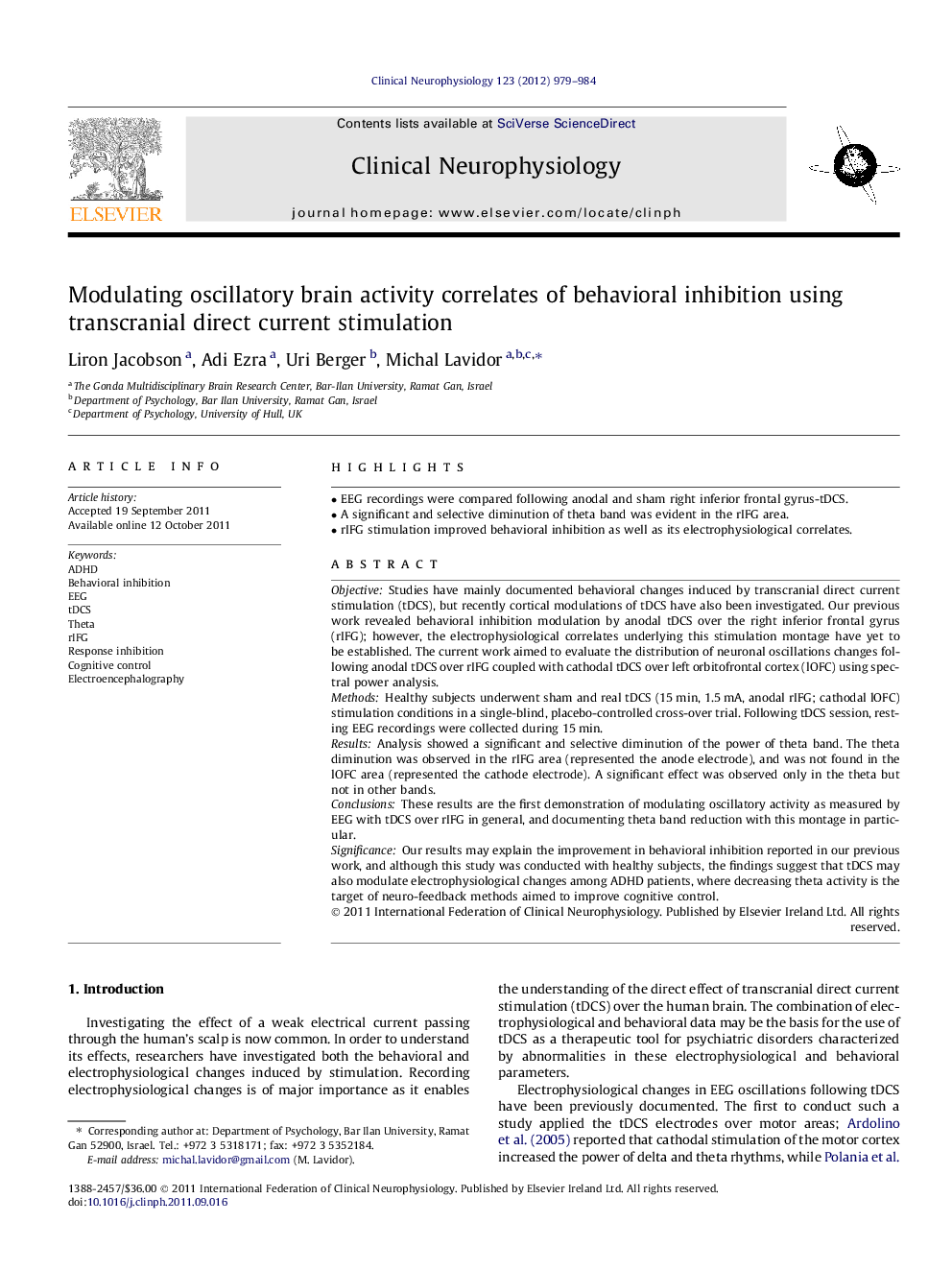| Article ID | Journal | Published Year | Pages | File Type |
|---|---|---|---|---|
| 3045291 | Clinical Neurophysiology | 2012 | 6 Pages |
ObjectiveStudies have mainly documented behavioral changes induced by transcranial direct current stimulation (tDCS), but recently cortical modulations of tDCS have also been investigated. Our previous work revealed behavioral inhibition modulation by anodal tDCS over the right inferior frontal gyrus (rIFG); however, the electrophysiological correlates underlying this stimulation montage have yet to be established. The current work aimed to evaluate the distribution of neuronal oscillations changes following anodal tDCS over rIFG coupled with cathodal tDCS over left orbitofrontal cortex (lOFC) using spectral power analysis.MethodsHealthy subjects underwent sham and real tDCS (15 min, 1.5 mA, anodal rIFG; cathodal lOFC) stimulation conditions in a single-blind, placebo-controlled cross-over trial. Following tDCS session, resting EEG recordings were collected during 15 min.ResultsAnalysis showed a significant and selective diminution of the power of theta band. The theta diminution was observed in the rIFG area (represented the anode electrode), and was not found in the lOFC area (represented the cathode electrode). A significant effect was observed only in the theta but not in other bands.ConclusionsThese results are the first demonstration of modulating oscillatory activity as measured by EEG with tDCS over rIFG in general, and documenting theta band reduction with this montage in particular.SignificanceOur results may explain the improvement in behavioral inhibition reported in our previous work, and although this study was conducted with healthy subjects, the findings suggest that tDCS may also modulate electrophysiological changes among ADHD patients, where decreasing theta activity is the target of neuro-feedback methods aimed to improve cognitive control.
► EEG recordings were compared following anodal and sham right inferior frontal gyrus-tDCS. ► A significant and selective diminution of theta band was evident in the rIFG area. ► rIFG stimulation improved behavioral inhibition as well as its electrophysiological correlates.
